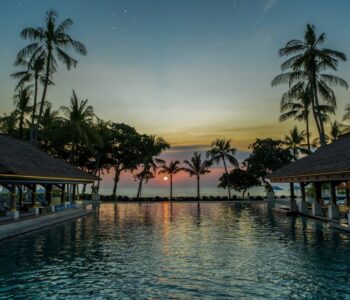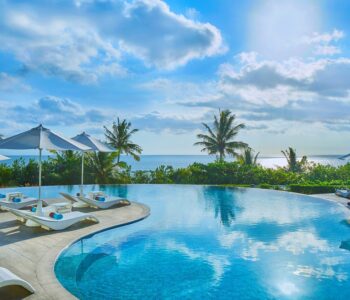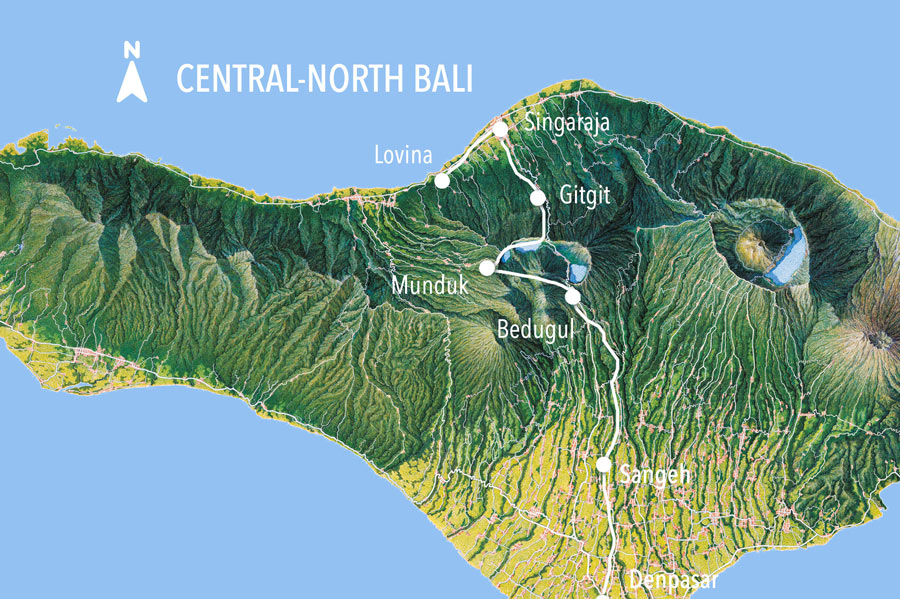
Make sure to save our free Curated Google Maps List featuring every destination listed in this East Bali Road Trip Itinerary.
There’s nothing quite like travelling north. The journey showcases the island’s diversity, travelling straight through the heart of Bali, past nutmeg forests and mist-shrouded peaks, to dramatic mountain roads that wind their way down to a sparse and quiet coastline.
The final destination is Lovina, the north’s most popular beach destination, known for its sunrises and dolphin spotting. However the lakes and forests of Munduk make for great exploration along the way as well, plus a stop for some history in Bali’s old capital of Singaraja.
Other Bali Road Trip Itineraries:
Northwest Bali | East Bali
The First Leg
There are many roads that lead north, but from south Bali the most convenient and direct route is through Abiansemal, east of Ubud, taking you on a straight road ‘up’. This route also takes you through the centre of Bali’s capital city, Denpasar, and offers some brief context to a more commercial and urban side of Bali.
Sangeh Monkey Forest
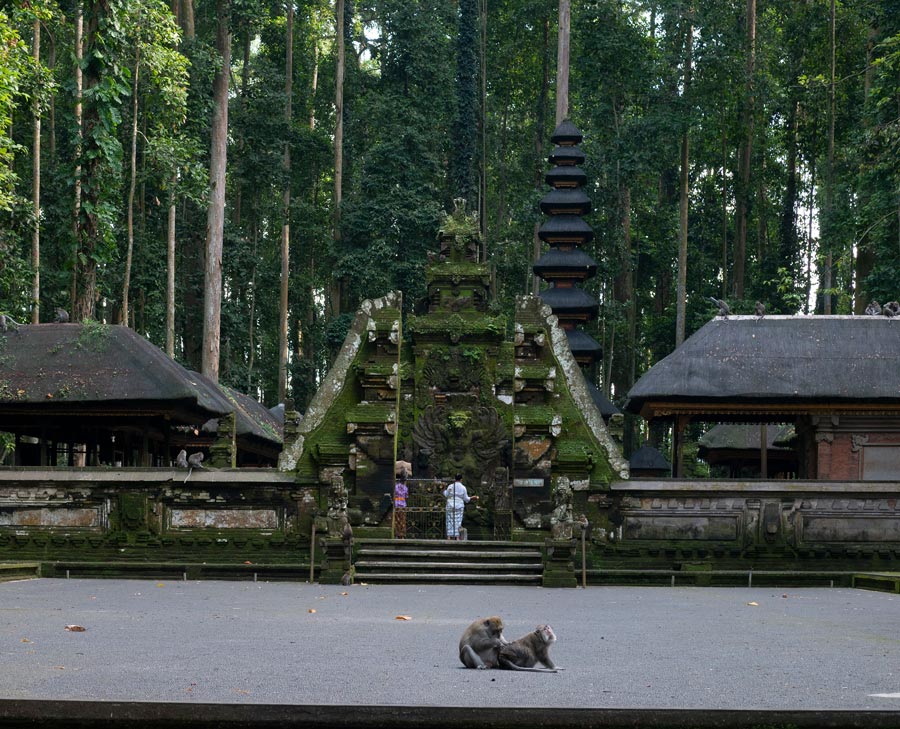
On the way north, after a 1.5-hour drive, there’s an opportunity to stop at a lesser-visited monkey forest, known locally as Alas Pala, literally ‘nutmeg forest’. Surrounded by flat farmlands and rice fields, the forest seems to appear out of nowhere, with 30m high nutmeg trees (not the spice kind) soaring towards the sky.
The 10-hectare forest surrounds a special temple, Pura Bukit Sari, around which a troop of 700 long-tail macaques roam freely, giving the area its nickname, ‘Sangeh Monkey Forest.’ Visitors are invited to walk around the temple grounds and designated path, shaded within the giant grove. Other wildlife said to be seen here are falcons, eagles, owls and musang, to name a few.
Bali Botanical Gardens
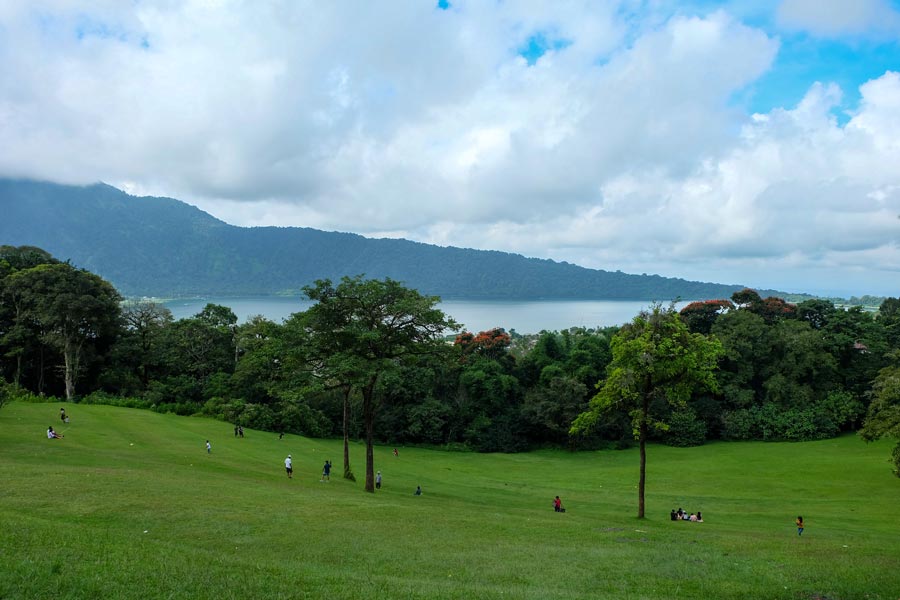
Another hour’s drive through village roads will take you to Bedugul, the popular highland town of central Bali, and a hub for farmers to selling their produce. Here the air is noticeably more crisp and clean. Over 1,000m above sea level the climate drops to a comfortable 18 to 24 degrees Celsius.
If you aren’t bored of forests, an exploration of the Bali Botanical Gardens (Kebun Raya Eka Karya) is a must. An expansive 157-hectares, it is the largest botanical garden in Indonesia, dominated by pine forests, with a selection of dedicated conservatoriums and gardens, a cactus greenhouse and a herbal medicine garden. With vast open park spaces, it’s the perfect spot for a picnic, including an area that overlooks Lake Beratan.
Pura Ulun Danu Beratan
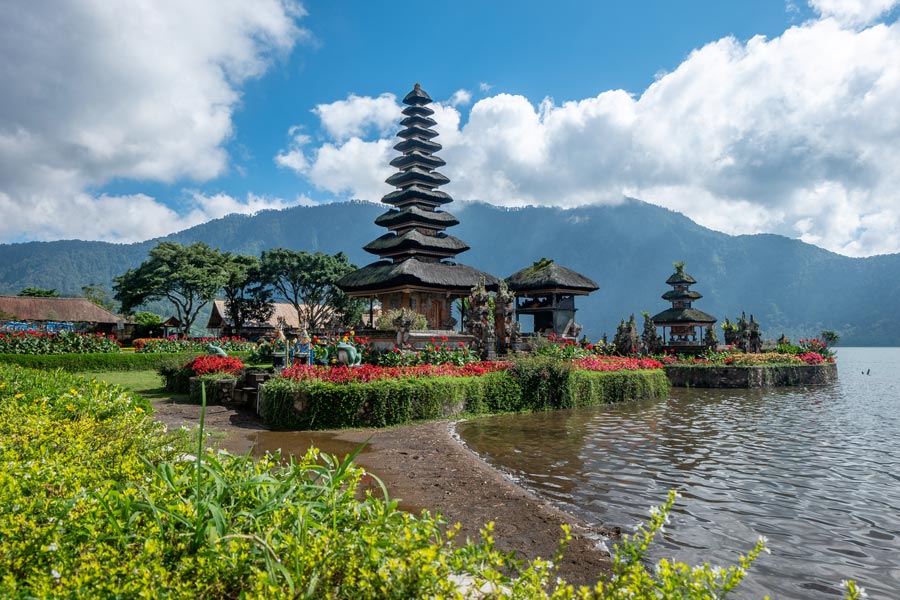
The famous ‘temple on the lake’, is a must for first-timers to Bedugul. Pura Ulun Danu Beratan, originally built in 1633, is one of Bali’s major temples and nestles on the shore of Lake Beratan. The lake is a major source of irrigation and thus the temple is dedicated to Ida Batara Dewi Ulun Danu (or Dewi Danu), the lake goddess, prayed to for providing fertility to the land. Explore the vast temple grounds, or take a boat out into the centre of the lake from the adjacent pier.
Crossroads: Munduk
Twenty minutes north of Bedugul we reach the highest point of this central region known as Munduk. With quite a bit to explore, it makes for a great mid-point to spend the night, allowing for time to check out the twin lakes and a hotbed of waterfalls found in the area.
Twin Lakes
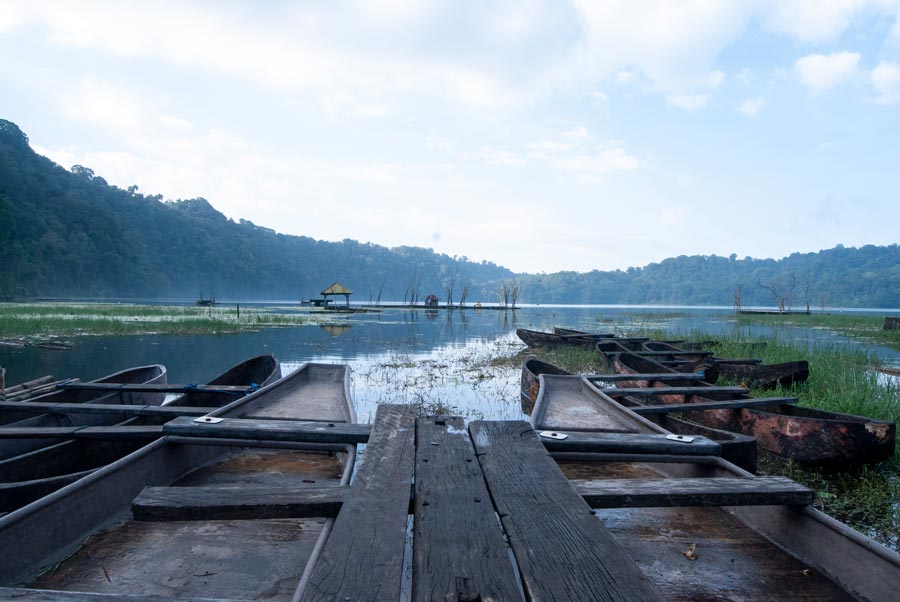
Lakes Tamblingan and Buyan are the main attractions in Munduk, with the Jl. Raya Wanagiri road travelling across the top of the ridge that borders the ‘twin lakes.’ Once one majestic body of water, cosying at the foot of Mt.Lesung, a landslide separated them into the two distinct lakes they are now. Local eateries line the roadside, presenting scenic views down to the lakes, best enjoyed with a hot cup of kopi Bali.
For those looking to get a closer look at the lakes, you can travel down to Pura Ulun Danu Tamblingan, found on the banks of the lake which gets half-submerged in water when the rains come and the water levels rise.
Melanting Waterfall
Now there are many waterfalls around Munduk, many of which are found on the north side of the twin lakes, including the two favourites, Banyumala and Banyuwana. Each requires a short trek into the forest promising a refreshing swim in a plunge pool.
For a more complete experience, we suggest going to Melanting Waterfall on the mountain roads descending to the north coast. It offers a longer trek through rolling foothills, on the edge of ravines, with views across Bali’s northern landscape. The waterfall itself is a powerful force, churning out a foaming gush of waters from 30m high into a relatively small plunge pool below, which trickles off into a peaceful stream that visitors can comfortably scramble up.
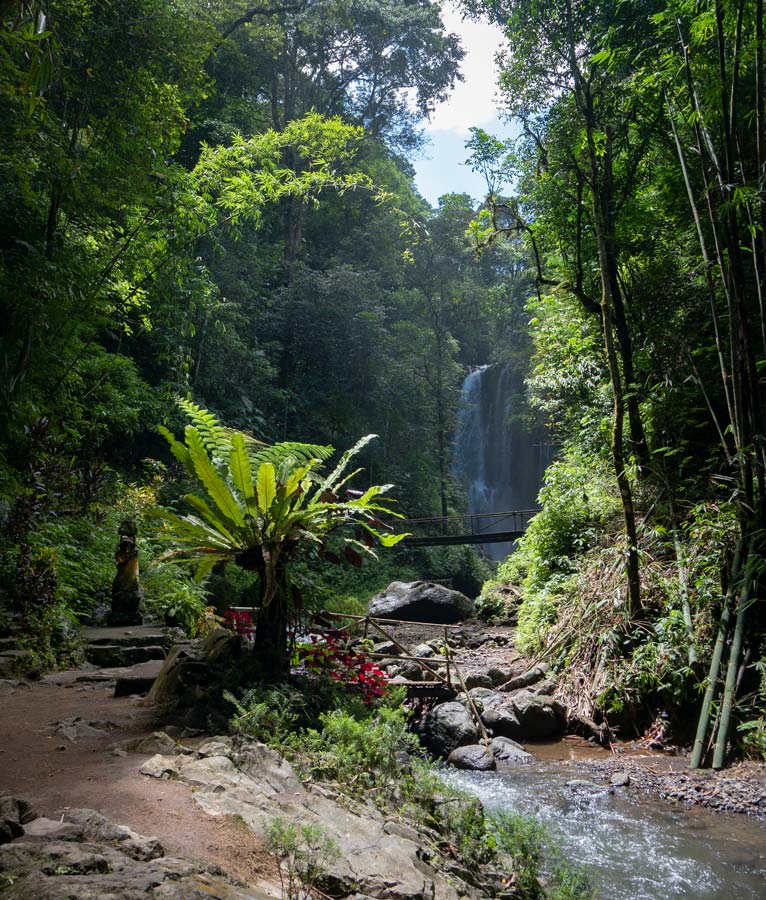
Stay: Munduk Menir Villas
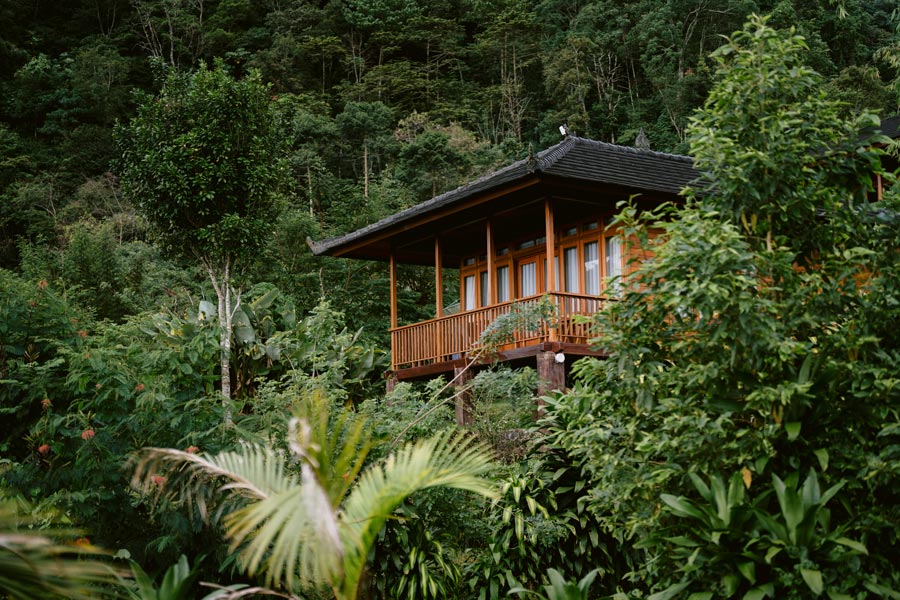
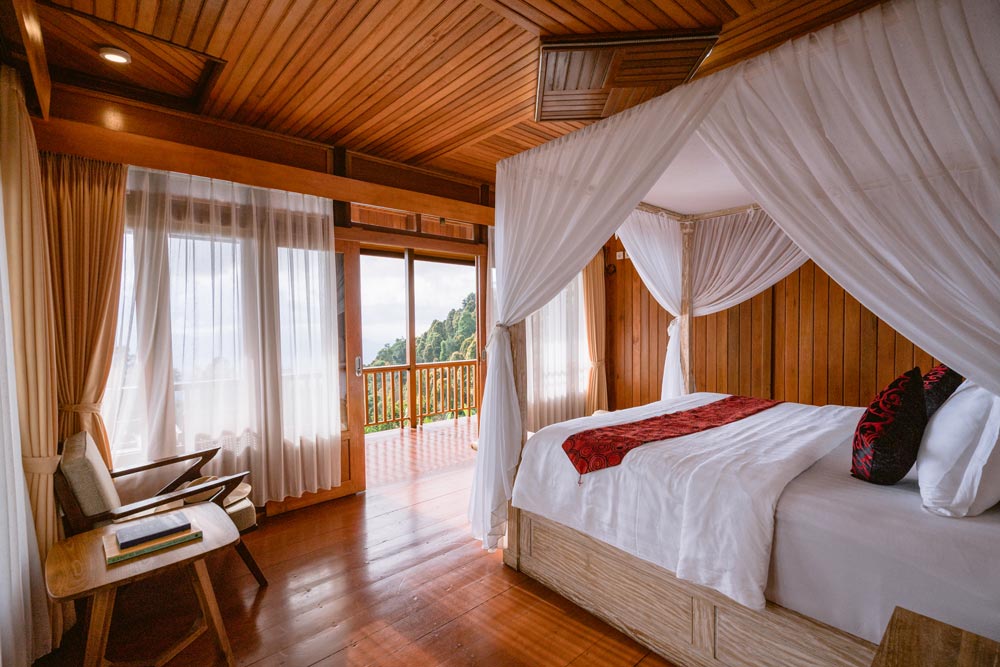
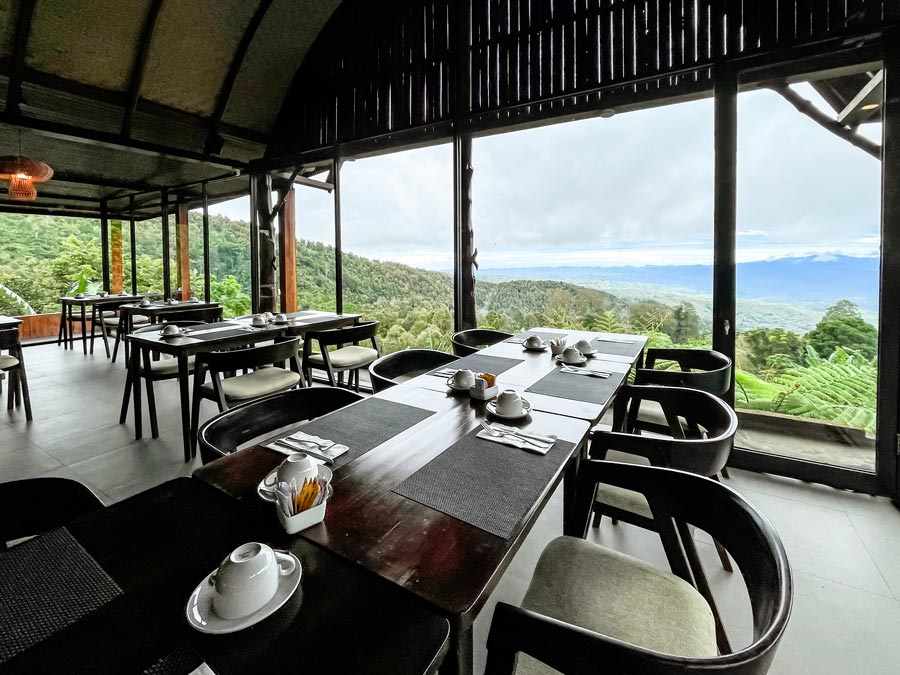
Cosy wooden mountain lodges set the scene at Munduk Menir Villas, scattered atop a dramatic valley that cascades down to Bali’s north coast. The boutique resort, enclosed by mountainside forest and farmland, is a peaceful retreat into the countryside, immersed in nature.
Accommodations range from studio rooms to two-bedroom villas with a private pool, and options of a private outdoor stone jacuzzi, ideal for the chilly Munduk climate. Each of these cosy wooden cabins has a charming terrace area designed to ensure guests can take in the views, best experienced with their signature ‘breakfast on the balcony’.
Mundur Menir Villas’ heated infinity pool is a favourite spot to warm up in the cooling climate the area is known for, whilst at night a bonfire is set up to keep those evening chills at bay. At the heart of the experience is Munduk Spices Restaurant, a panoramic dining venue where guests can enjoy the region’s rich flavours. The menu highlights fresh, locally sourced ingredients and traditional Balinese spices.
@mundukmenirvillas
mundukmenirvillas.com
Double Back: Road to Singaraja
For a more interesting route down to the north, we’re doubling back past the twin lakes to take the newly built ‘shortcut road’ (Jl. Raya Bedugul-Singaraja) which cuts through the mountain and offers a fast pass down to Bali’s old capital, Singaraja.
Still the capital of Buleleng Regency, Singaraja was the Dutch colonial capital of Bali and the Lesser Sunda Islands from 1849 until 1960. It was a port town, and, hence was a melting pot of cultures. Some of this is still found today, like the Chinese temple and Dutch colonial buildings located in the old Singaraja harbour area.
Gedong Kirtya & Museum Buleleng
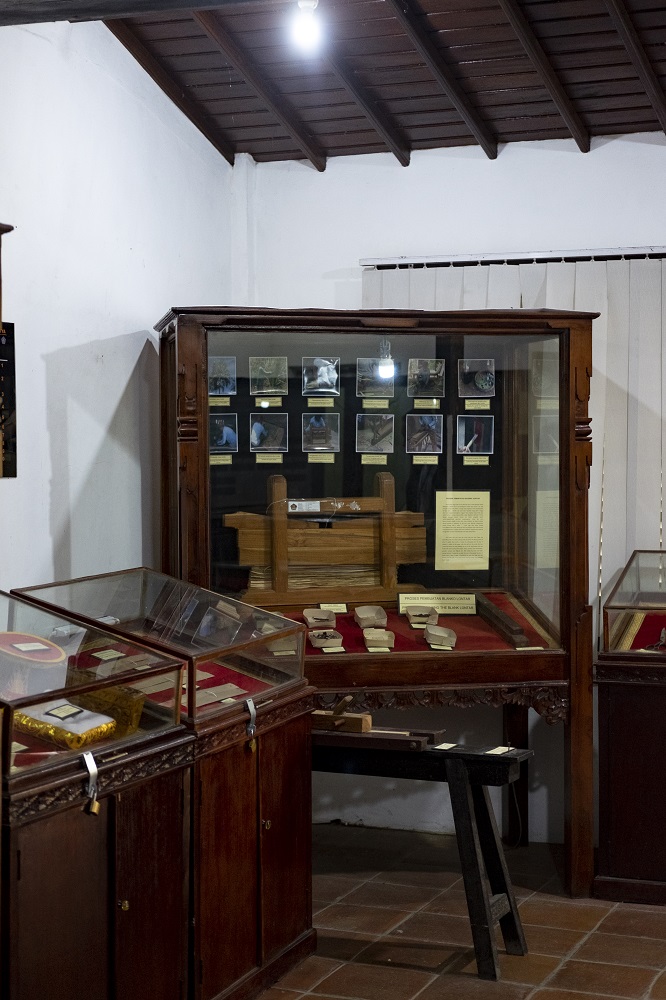
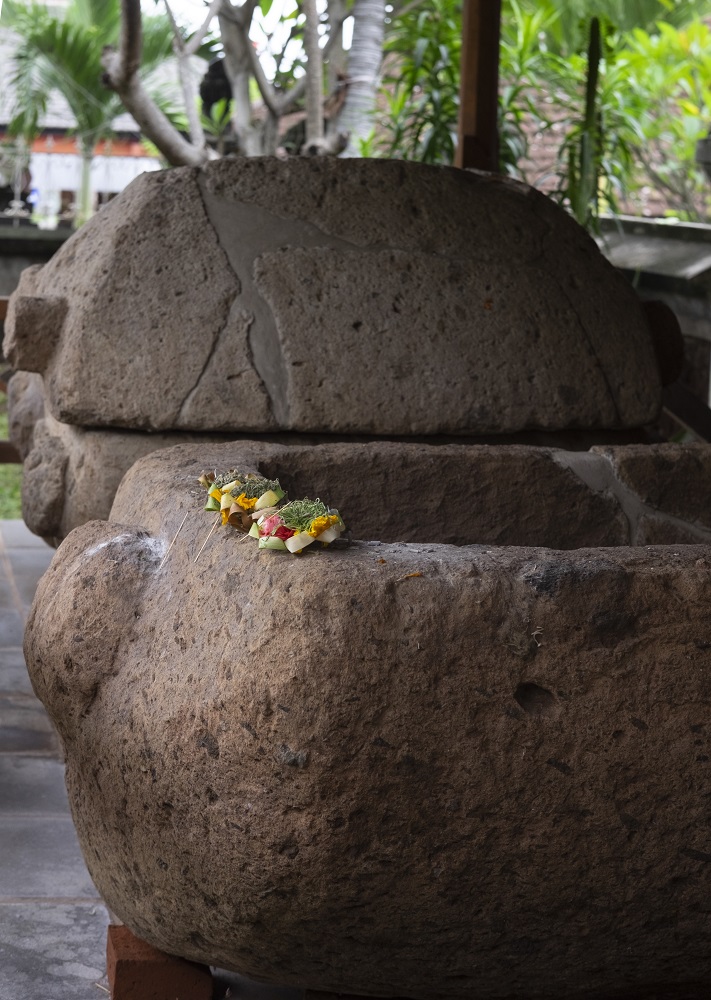
Singaraja has an old-time feel, with low-rise buildings and wide, tree-lined roads setting the scene. Nowhere captures this atmosphere better than Gedong Kirtya and Museum Buleleng, two historic centres found side-by-side.
Gedong Kirtya is the first museum dedicated to Bali’s palm leaf manuscripts, known as lontar. Established in 1928 by F.A Liefrinck and Dr. Van Der Tuuk, two pioneers of research on Balinese culture, the museum is housed in an old colonial building. It is essentially a library of scrolls, with 2,000 lontar archived there, with displays and a tour on how these scrolls are prepared.
Meanwhile, Museum Buleleng, found in the same complex, exhibits ancient artefacts from Bali’s prehistoric past, like stone sarcophagi and megaliths, all the way to more modern artefacts like personal items of past kings, to historic currencies and traditional tools.
Detour: North Bali Temples
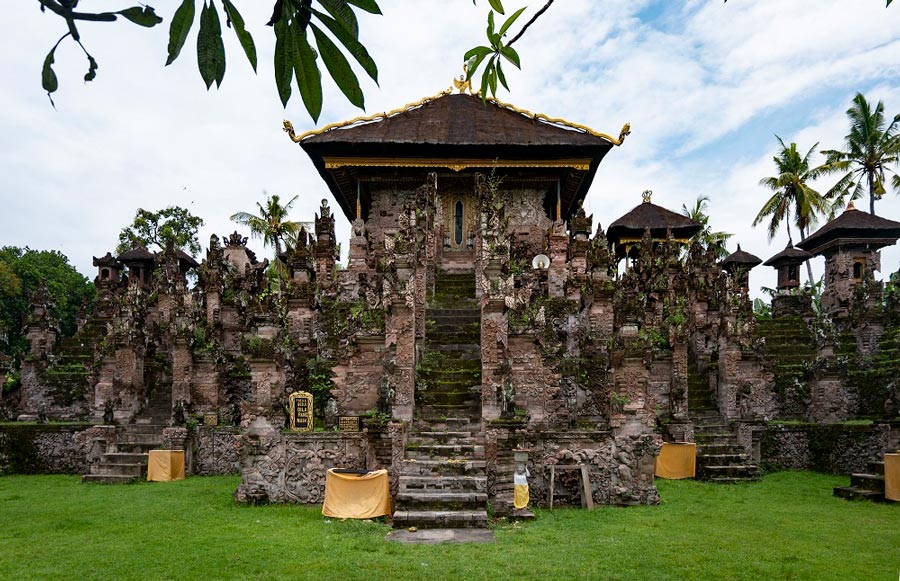
Before heading west towards Lovina, it’s worth exploring two exceptional Balinese temples found east of Singaraja, a 30-minute drive one way. More than anything they display north Bali’s penchant for intricate temple carvings and are therefore quite distinct from their southern counterparts.
The first is Pura Beji, dating back to the 15th century. The reliefs and façades of the temple structures are incredibly ornate, the stones carved into creeping foliage, or protruding faces of demons, dragons and gods. The aling-aling, a barrier structure intended to repel evil spirits, features a carved figure of two Dutchmen playing stringed instruments.
The other temple is Pura Maduwe Karang, which welcomes visitors with its 36 stone statues that stand guard at its entrance, each representing a character of the Ramayana epic. Built in 1890, what makes this temple stand out is its peculiar carvings, of a Dutchman riding a bicycle, said to be a depiction of Dutch artist W.O.J. Nieuwenkamp who explored Bali on his bicycle in 1904 (the first bicycle ever on the island!)
Lovina
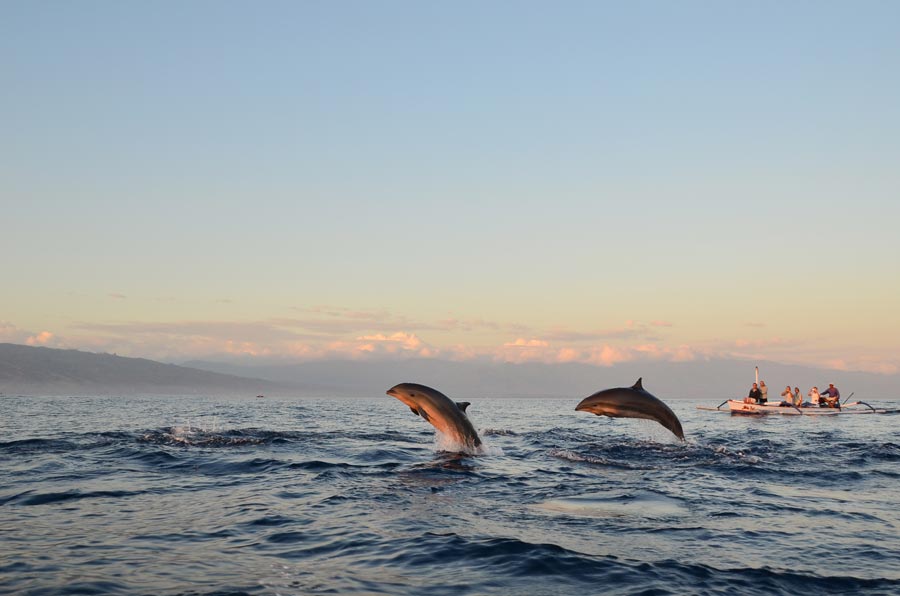
Another 20-minute drive from Singarja (or 50 minutes from the temples), you’ll finally find yourself at Lovina. As mentioned, this is the north’s most touristic spot but even then there are few crowds. Lovina Beach is where most congregate, a tranquil black sand beach lined with beachfront resorts and local eateries. The slower pace is palpable, and that is precisely the charm; it resembles what Kuta might have been like 20 years ago or so, with some more modern spots too of course.
Of course, Lovina is most well-known for its dolphin watching. Traditional jukung boats bring tourists at sunrise to witness these majestic marine mammals as they too chase the rising sun. This is a memorable activity for many, but on busy periods it gets overcrowded and loses its appeal (especially as this is said to worry the dolphins).
Banjar Hot Springs

Back towards the mountains that backdrop Singaraja, there is a must-visit hot spring location tucked deep in the foothills. This steamy oasis is where to go to let your muscles soak in the soothing, healing waters. The complex is home to three naturally heated pools, surrounded entirely by the inland forests. Stone-carved fountain spouts fill up the pools, allowing you to stand beneath them for a fresh dose of hot water. It’s the perfect way to rejuvenate after a long trip or day of exploration.
Brahmavihara-Arama
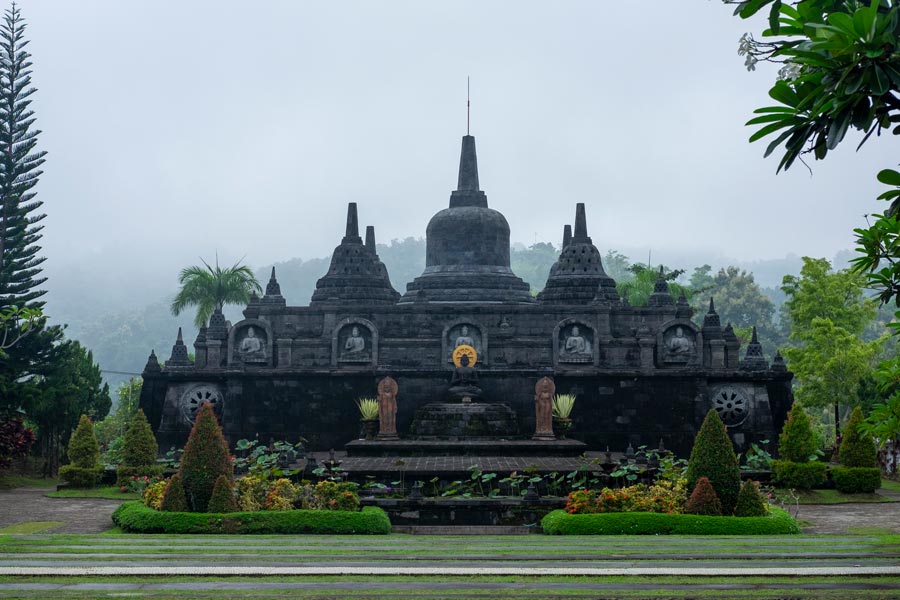
Another cultural site to visit whilst in Lovina is this majestic Buddhist Temple Monastery. It it the largest one in Bali, a vast but serene complex filled with temples, pagodas and peaceful gardens. A grand flight of stairs take you to the highest point of the monastery, where a replica of the Borobudur Temple stands amidst a large garden. An air of peace seems to have settled above the compound, which stands high above the surrounding jungled ravine, with views out to the distant coast.
Stay: The Damai
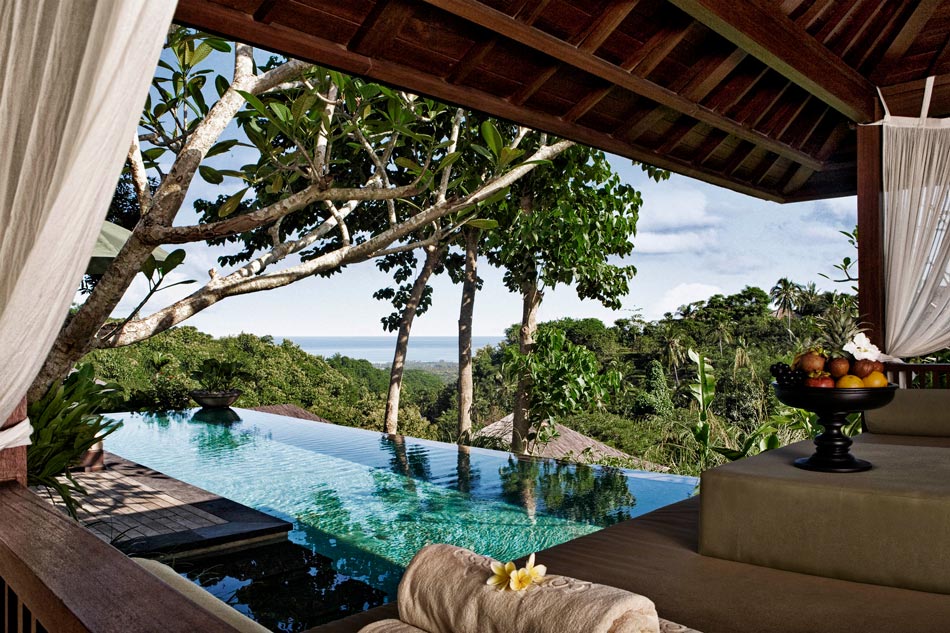

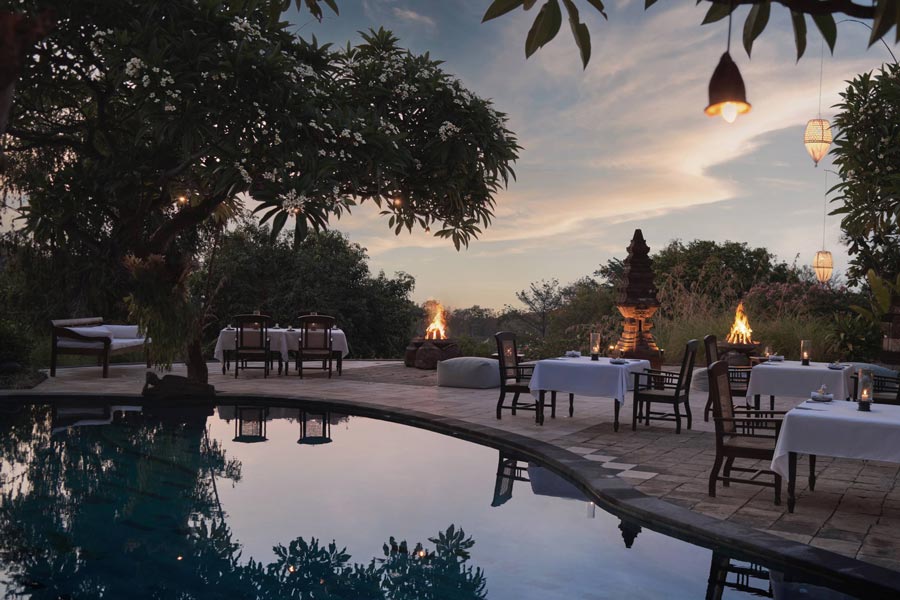
‘Hard to Find, Hard to Leave’ is how this secluded boutique resort in the jungle-clad hills of Kayuputih Village, describes itself. With only 15 villas intimately placed within their little garden of Eden, The Damai is the epitome of a hidden gem, and certainly lives up to its name, meaning ‘peace’ in Indonesian.
Offering four choices of accommodation –Garden Villa, Pool Studio, Pool Villa and Master Pool Villa– each has been artfully decorated with handpicked arts and accoutrements. The hardwood furniture certainly defines the space, be it the four-poster bed, traditional-style Javanese settees, or hand-carved Balinese doors. But ‘interiors’ does not give the space justice, as the outdoors are an integral aspect of the aesthetic, be it the generous bay windows, open-plan living rooms or semi-outdoor bathrooms, ensuring the tropical surroundings are given room to be appreciated. Elegant, and boasting beautiful views, guests will feel like they’re staying at a friend’s tasteful mountain home.
When it comes to dining, The Restaurant at The Damai has quite the reputation. Located near the pool, enjoying the elements and a cool highland breeze, guests are invited to savour bistro-style Balinese flavours, in the glow of a flickering fire. The Restaurant prides itself on its use of local produce, sourcing from its very own farm and fresh local catch.



